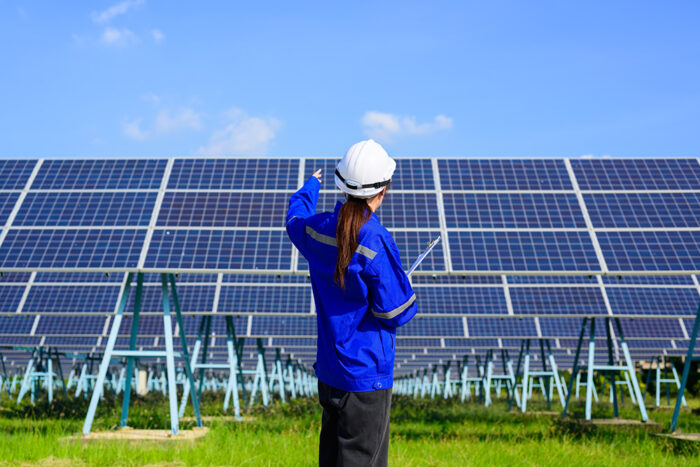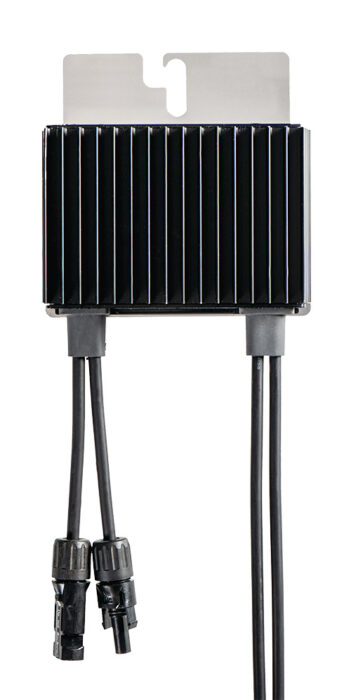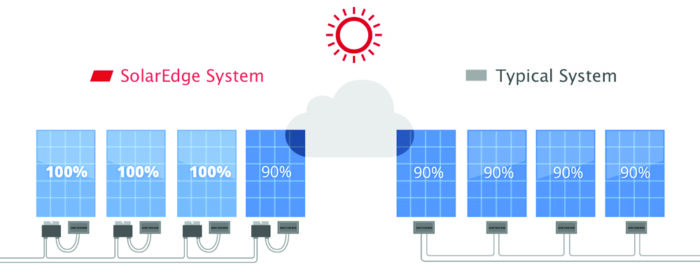Repowering the Energy Transition
Posted 21/06/2023 - 4 minute read

2022 was a bumper year for solar in the UK. In the commercial sector, an increasing number of organisations are installing PV systems for the first time to mitigate rising energy prices; to supplement onsite power and to demonstrate a commitment to net zero. Whilst growth has undoubtedly been boosted by the energy crisis, the markets were already heading in the direction of renewables. Solar is far from new to the UK and, today, many owners are taking stock of legacy systems as they reach maturity. As power electronics are approaching end of life, and with developments across the whole range of PV technologies, performance has become a focus of attention.
Starting at the Inverter
Overall yield is key to any decision to re-invest. A system that provides more usable power throughout its extended lifetime will generate a better financial return and, since the inverter is the element responsible for efficiency, it’s a great place to start.
Let’s consider a commercial system that’s been installed for a number of years - with traditional string inverters and where those inverters have reached the end of their warranty period. By opting to keep the existing solar modules and concentrating on the power electronics, you could upgrade the string inverters to a system with MLPE – Module Level Power Electronics. A smart choice would be the DC-optimised system from SolarEdge.
 MLPE, Power Optimizers and a Smart Inverter
MLPE, Power Optimizers and a Smart Inverter
The SolarEdge DC-optimised solution uses MLPE technology, enabled by Power Optimizers that are mounted on each module – or, in the case of many commercial installations, on each pair of modules. With the inverter acting as the brains of the system, this clever combination allows each individual module to produce at its own maximum level.

SolarEdge Power Optimiser
I
n a traditional PV system, every module works at the lowest level of the string due to mismatch losses. If just one module is affected by dirt or micro-cracks - or is shaded at certain points during the day - and its output falls, the modules will be mismatched, and every other module in the string will drop to that same output level. It’s a bit like running a race holding hands with a team of people. You’ll only go as fast as the slowest person. In a DC-optimised system, each module is allowed to work at its maximum point – regardless of the other modules within a string - thus the overall output is increased.
What else do Power Optimizers do?
In addition to increasing overall yield, Power Optimizers deliver two other important benefits: visibility and increased safety.
Module-Level Monitoring means Greater Visibility
Visibility keeps PV systems online for longer. If a fault occurs in a large commercial installation, the process of finding it can be lengthy – losing the system precious hours of sunlight and using up time and resources to identify and fix the problem. Module-level monitoring gives the system owner and installer full visibility right down to the module level and allows faults to be pin-pointed. And with remote troubleshooting, often the fix doesn’t even require a visit to site.
Safety
With no moving parts, PV systems are relatively straightforward – and with good installation and maintenance, they are safe. The addition of SolarEdge Power Optimizers also provides arc-fault detection and improves the safety of the working environment.
All the while the sun is shining on a solar module, it’s producing electricity. In a commercial system with multiple modules, that soon adds up to some very high voltages. With the SolarEdge system, as soon as AC power is disconnected from the inverter, SolarEdge’s SafeDC™ feature de-energises the DC cables, and the output voltage of the Power Optimizers on the modules drops down to a touch-safe level of around 1V. For anyone working on the roof, or in the event of an emergency, the hazard is removed by switching off the AC to the inverter.
The Upgrade
During an upgrade to a SolarEdge system, each pair of modules would be fitted with Power Optimizers. For a legacy system – whether it’s ground-mount or rooftop - with slightly older, lower current modules, the P801 Power Optimizers, would provide the perfect solution for 250-380W* modules. The P801s are also compatible with a range of SolarEdge three phase inverters from 16 – 100kW.
Ready for the Future
With some of the longest warranties in the marketplace, a newly upgraded SolarEdge system also benefits system owners into the years ahead. Power Optimizers are warrantied for 25 years, and commercial inverters come with a 12-year warranty as standard that can be extended to 20 years.
In addition, if the system is roof mounted, since the SolarEdge system allows you to use different module types and orientations within the same string, it enables greater design flexibility. So, if the system owner decides to expand in the future, more of the available roof-space can be considered in placing the new modules.
A Good Time to Upgrade?
If a PV system is showing signs of failure or underperformance and is out of warranty, it could be the right time for the system owner to consider an upgrade. If that’s the case, the first step is a full system check to assess any damage and to understand exactly what’s going on. The best approach for the system owner will depend on both budget and ambition, but before you decide to ditch the complete installation, it may be time to investigate an upgrade to the power electronics.
Useful links
P801 Power Optimizers
*P801 Power Optimizers can be used for 250-400W modules with Isc is less than 11A and Voc is less than 60V
 2022 was a bumper year for solar in the UK. In the commercial sector, an increasing number of organisations are installing PV systems for the first time to mitigate rising energy prices; to supplement onsite power and to demonstrate a commitment to net zero. Whilst growth has undoubtedly been boosted by the energy crisis, the markets were already heading in the direction of renewables. Solar is far from new to the UK and, today, many owners are taking stock of legacy systems as they reach maturity. As power electronics are approaching end of life, and with developments across the whole range of PV technologies, performance has become a focus of attention.
2022 was a bumper year for solar in the UK. In the commercial sector, an increasing number of organisations are installing PV systems for the first time to mitigate rising energy prices; to supplement onsite power and to demonstrate a commitment to net zero. Whilst growth has undoubtedly been boosted by the energy crisis, the markets were already heading in the direction of renewables. Solar is far from new to the UK and, today, many owners are taking stock of legacy systems as they reach maturity. As power electronics are approaching end of life, and with developments across the whole range of PV technologies, performance has become a focus of attention.
 MLPE, Power Optimizers and a Smart Inverter
MLPE, Power Optimizers and a Smart Inverter SolarEdge Power Optimiser
In a traditional PV system, every module works at the lowest level of the string due to mismatch losses. If just one module is affected by dirt or micro-cracks - or is shaded at certain points during the day - and its output falls, the modules will be mismatched, and every other module in the string will drop to that same output level. It’s a bit like running a race holding hands with a team of people. You’ll only go as fast as the slowest person. In a DC-optimised system, each module is allowed to work at its maximum point – regardless of the other modules within a string - thus the overall output is increased.
SolarEdge Power Optimiser
In a traditional PV system, every module works at the lowest level of the string due to mismatch losses. If just one module is affected by dirt or micro-cracks - or is shaded at certain points during the day - and its output falls, the modules will be mismatched, and every other module in the string will drop to that same output level. It’s a bit like running a race holding hands with a team of people. You’ll only go as fast as the slowest person. In a DC-optimised system, each module is allowed to work at its maximum point – regardless of the other modules within a string - thus the overall output is increased.
